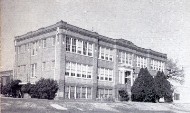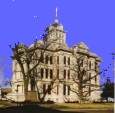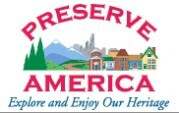Milam County Historical Commission
Milam County, Texas
All credit for these articles go to
Susie Sansom-Piper and
the Rockdale Reporter
Milam County, Texas
All credit for these articles go to
Susie Sansom-Piper and
the Rockdale Reporter






index to Black History month articles
Written by Susie Sansom-Piper and
published in the Rockdale Reporter
Written by Susie Sansom-Piper and
published in the Rockdale Reporter
ON THE OTHER SIDE OF THE TRACKS, SERIES 9, PART 2
Editor’s note: This is the second article in the ninth series of “On the Other Side of
the Tracks, a Black History Month series by former Rockdale resident, and longtime
teacher, Susie Sansom-Piper.
Education, jobs and that ‘chicken roost’
By SUSIE SANSOM-PIPER
Reporter contributor
These are memories and recollections given to me by my parents, my experiences, and
information from many of the now deceased older people.
This also portrays events leading to the finality of living on “the other side of the
tracks,” to September 1966, when life began “On Both Sides of the Tracks.”
PRE-WAR — And then came the late thirties and early forties. For special recreation, the
Matson “moving picture” theater became available, but seating for blacks was only
available to blacks in a small “upstairs section” near the movie machines, which were
often noisy. Many labeled this section as the “chicken roost.”
There were no available restrooms, and if urgency became necessary, you were free to go
outside to a hidden place, but you had to pay again to get back inside.
The local Fair Park was available for Juneteenth Celebrations, but restroom facilities
were especially labeled. “Whites Only” and “Blacks Only!”
There will always be a fondness for the wonderful singers who existed during this era,
for each church had explosive talent.
Some of these singers were: Lillie Johnson, Pearl Davis and Ardie Judy at New Hope
Baptist Church; Minnie Fair, Earnestine Mays and Narvia Smith at Springfield Baptist
Church, and Courtney Cummings and Mittie Allen at Allen Chapel A. M. E.
Sunday night musicals were a traditional part of community worship during these years.
A male quartet was usually invited as an out-oftown guest for these occasions.
Schools were separated by race also, and the “colored school” only operated through Grade
10, and generally lasted for 8 months.
SCHOOLING — Before 1936, students who had a desire to finish high school had to secure a
room with someone in Cameron, and attend the Cameron Colored School.
It was during the tenure of Principal Shanks that the first “unlicensed” kindergarten was
established.
These students were in the same room with grades 9-10, but were taught by Prof. Shanks to
read, cursive writing, and arithmetic.
This group consisted of five girls and one boy. Prof. Shanks not only taught school and
served as principal, but he pedaled fresh fish on weekends.
He was also a great promoter of family values; for to begin a school week, two songs, a
prayer, and special announcements were held in the auditorium for all students.
The same routine ended a school week on Friday afternoons.
Many of these early students became teachers or principals of various schools.
Vivian Jones, James Battle, Ardelia West, Marcella Cavil, Alma Richards, Laura Moultrie,
Ponie Miller, Zelma Hill, Itasca Cavil, Courtney Nelson, Vernice McKee and Audrey Lewis
were among the Shanks graduates who later entered the world of teaching.
Many students of this era entered various work categories, but the community as a whole,
had an excellent “getting along” way of living together.
COFFIELD — During the late 30’s or early 40’s, Oil Entrepreneur, the late H. H. Coffield
built a new ice house, turkey dressing plant and office building on the north side of the
railroad tracks.
His office faced Main Street.
His varieties of business activities provided an additional working income for the black
community and surrounding rural areas. The entire building yet stands, but the ice house
and turkey plant no longer exist.
Yet, these positive attributes contributed worthiness to the community on the other side
of the tracks, for the spirit of love and cooperation still remains.
.
H. H. Coffield ice house, just north of tracks, provided many jobs.
.
.
